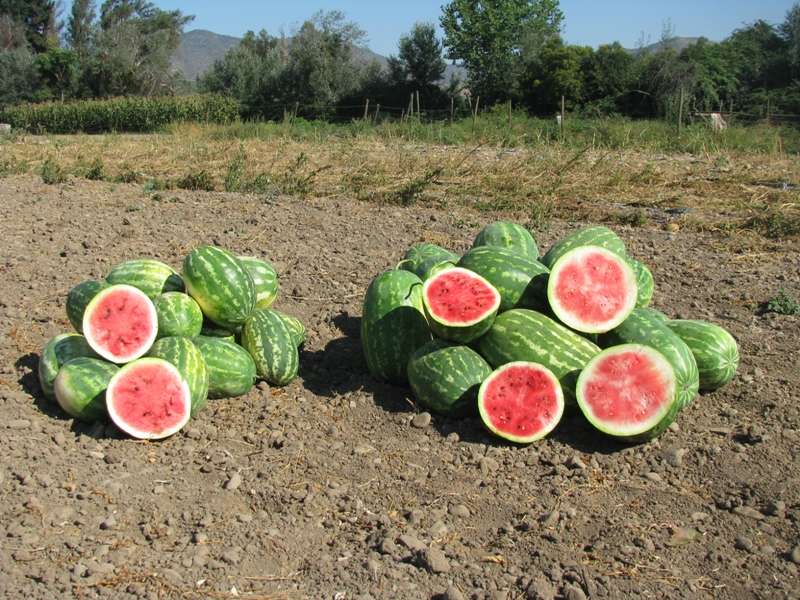Grafting increases Chilean-grown watermelon yield, quality

Grafting of seedlings has been used for decades in many parts of the world, but adoption of the technique is still limited in many countries, due in part to higher costs of grafted seedlings and the uncertainty of grafting benefits under certain conditions. "Because of higher costs involved, the use of grafted seedlings can only be recommended if it provides clear biological and economic benefits," said Samuel Contreras, lead author of a study in the August 2016 issue of HortTechnology. Contreras and researchers at the Pontificia Universidad Católica de Chile studied the effects on yield and quality with watermelon plants grown under Chilean field conditions. Their results showed that grafting increased both yield and quality of seeded and seedless watermelon cultivars.
Experiments were conducted over two seasons in central Chile. "During the two seasons previous to the experiments, watermelons were produced in the same field, and symptoms of fusarium wilt were observed in the test area," the authors explained.
In the first experiment, the researchers used four of the most popular seeded watermelon cultivars grown in Chile ('Santa Ameila', 'Delta', '1414', and 'Catira') grafted with commercial rootstocks 'Marathon' and 'Macis'. Nongrafted plants were used for treatment comparison. One seeded ('Santa Amelia') and three seedless ('Kalahari', 'SV0051WA', and 'SV7467WD') cultivars were used in the second experiment; each was grown ungrafted and grafted on 'Marathon' rootstock. Plants were evaluated in untreated soil and soil treated with metam sodium.
In both experiments, there were significant differences among treatments for fruit yield per plant. Productivity of grafted plants was always higher than nongrafted plants; average marketable yield of grafted treatments was 2.4 times (experiment 1) and 2.6 times (experiment 2) the average of nongrafted treatments. "These differences in productivity were explained because plants of a same cultivar produced more and heavier fruit when grafted," the authors said.
No significant differences were found in color and firmness between fruit of grafted and nongrafted plants in the first experiment, but grafted plants produced fruit with higher soluble solid concentration (SSC), rind thickness, and diameter than nongrafted plants. Fruit from seedless cultivars did not show significant differences in SSC.
Plants presented with fusarium wilt in both experiments, which the researchers said was the "main limitation" for nongrafted plant production.
Contreras said the results showed a significant improvement in yield and quality of grafted watermelons when produced in a field naturally infested with fusarium wilt. "However, economic justification of grafting depends on costs and benefits associated with the use of this technology. Production of more and larger fruit per plant would lead to higher income that would largely offset the costs of grafting, thus the technique appears highly recommendable for Chilean growers."
More information: ASHS HortTechnology: horttech.ashspublications.org/ … nt/26/4/453.abstract
Journal information: HortTechnology
Provided by American Society for Horticultural Science



















